- Revenue Cycle Management
- COVID-19
- Reimbursement
- Diabetes Awareness Month
- Risk Management
- Patient Retention
- Staffing
- Medical Economics® 100th Anniversary
- Coding and documentation
- Business of Endocrinology
- Telehealth
- Physicians Financial News
- Cybersecurity
- Cardiovascular Clinical Consult
- Locum Tenens, brought to you by LocumLife®
- Weight Management
- Business of Women's Health
- Practice Efficiency
- Finance and Wealth
- EHRs
- Remote Patient Monitoring
- Sponsored Webinars
- Medical Technology
- Billing and collections
- Acute Pain Management
- Exclusive Content
- Value-based Care
- Business of Pediatrics
- Concierge Medicine 2.0 by Castle Connolly Private Health Partners
- Practice Growth
- Concierge Medicine
- Business of Cardiology
- Implementing the Topcon Ocular Telehealth Platform
- Malpractice
- Influenza
- Sexual Health
- Chronic Conditions
- Technology
- Legal and Policy
- Money
- Opinion
- Vaccines
- Practice Management
- Patient Relations
- Careers
The Temple of the Tooth: A UNESCO Heritage Site
Just three years ago Sri Lanka was emerging from a long civil war. Here you can find a UNESCO Heritage Site along with a beautiful botanical garden and an elephant preserve.
When I told a friend I had been to the Temple of the Tooth in Kandy, Sri Lanka, she not only knew what I was talking about, but said, “I’ve always wanted to go there.” This surprised me. Though I hadn’t heard of the Temple before going, clearly others have. The Temple of the Tooth is a UNESCO Heritage site, largely due to the fact that it is believed to hold a relic of the tooth of Buddha.
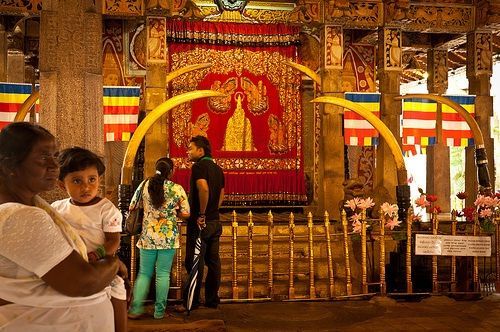
Inside the Temple, the tooth is well encased and not visible. Photo courtesy Thomas Mueller.
Now that doesn’t mean that a visitor will see the tooth. It seems it is enclosed in seven caskets, one inside the other. In addition, three different officials, each with a unique key for the lock, must be present for the tooth to be physically retrieved. Fortunately, that is of little loss to most visitors since the shrine built to house the tooth is so grand that one barely thinks about the absent tooth.
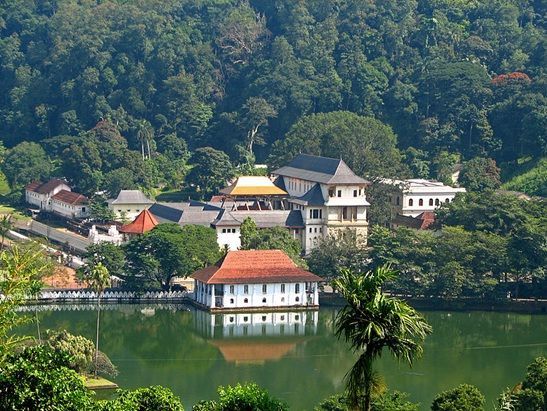
The Temple of the Tooth is in a larger complex, shown here. Photo from Wikipedia.
The journey from the Sri Lankan port of Colombo to the temple in Kandy is only 59 miles inland, but takes three hours on a bus one way because traffic is so heavy. That means at least six hours round trip for transportation alone, so the whole day is taken up with this excursion.
Across from the Temple is the Queen’s Hotel, truly a glorious creature in her own right. She evokes wonderful images of colonialism at its best. Her public rooms were sweeping and opulent, consistent with more than 100 years (built in 1895). It was here that we took refuge before and after going to the temple, which on a hot day can be a searing experience. It was also where we had lunch.
Our precursor for the Queen’s Hotel was the Royal Botanical Gardens of Sri Lanka located just a few miles West of Kandy in Peradeniya. It too was a refuge from the sun because of the many trees that line the walks and the lakes that neutralized the temperature. Tourists and local inhabitants leisurely walked the walk and basked in the pleasure of tranquility pierced only by the joyful squeals of children playing.
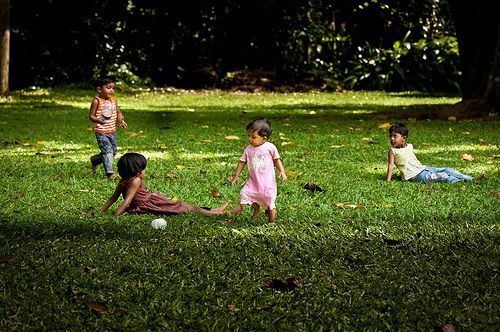
Children play in the Botanical Garden in Peradeniya, Sri Lanka. Photo courtesy of Thomas Mueller.
Before the clean, peaceful botanical gardens, we had a more dusty experience at the Pinnawala Elephant Preserve. For many, it was our most interesting stop of the day. The Preserve was established in 1975 to provide a sanctuary for orphan elephants.
At that time, the elephant population was markedly diminished on the island and this was an effort to reverse the near extinction of the elephants. Among the 60 or so inhabitants of the Preserve is an elephant that stepped on a land mind and is missing one limb. This is a sad reminder of the 26-year civil war in Sri Lanka that finally was resolved in 2009.
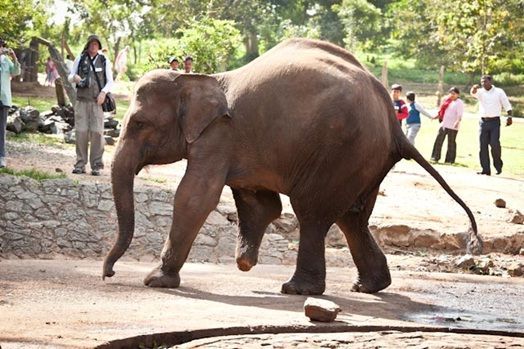
This elephant at the Pinnawala Elephant Preserve is limping due to the loss of its distal right forelimb to a land mine. Photo courtesy of Thomas Mueller
.
The elephants bath twice a day and it is a real treat to see these otherwise abandoned or orphaned animals take pleasure in their daily activities. When not busy enjoying themselves, however, they can be testy toward one another. We saw an adult female elephant flip a baby from a standing position to its back and belly up for no apparent reason. We assumed it was not the mother and that the infant had no family to protect it.
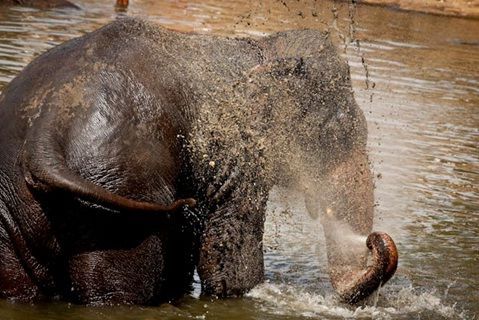
The elephants go to the river twice a day and take full advantage by spraying themselves with water. Photo courtesy of Thomas Mueller.
Sri Lanka has had its problems, including the long internal war resolved just three years ago. Nevertheless, it seems to have come out of its turmoil with energy and grace. The Colombo to Kandy trail was filled with activity on either side including shops, vendors, homes and restaurants. The tourist sites were interesting and well run. Overall, it was cleaner than Southern India. There was everything to like.
Some specifics
: Definitely take a tour. Driving on the road is not for the faint hearted or most tourists.
How to get there
: The day is long, which means that although the activities are not arduous, it is easy to get tired because of the length of the trip. Wear sunscreen and a hat for ultraviolet ray protection.
Caution
This is a 14-hour day, primarily because of travel time from Colombo to Kandy and back (six to seven hours).
Read more:
Mumbai: Gateway to Southern India
Old Goa: A UNESCO Heritage SIte
Elephanta Island, India: A UNESCO Heritage Site
Mattancherry Palace: Almost a UNESCO Heritage Site
Total Time:
